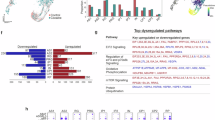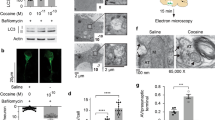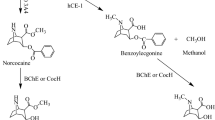Abstract
DURING a study of the inhibitory action of cocaine on cellular respiration, we found that the oxidations of added pyruvate by brain homogenate and by the respiring yeast, Torulopsis utilis, were inhibited to a similar degree, a 0.002-M concentration of the drug causing an inhibition of about 50 per cent in each case. It had previously been shown, using Saccharomyces cerevisiae, that the inhibition of fermentation by cocaine could also be attributed to the blocking of pyruvate metabolism, carboxylase being inhibited1,2.
This is a preview of subscription content, access via your institution
Access options
Subscribe to this journal
Receive 51 print issues and online access
$199.00 per year
only $3.90 per issue
Buy this article
- Purchase on SpringerLink
- Instant access to full article PDF
Prices may be subject to local taxes which are calculated during checkout
Similar content being viewed by others
References
Ryman, B. E., and Walsh, E. O'F., Nature, 167, 770 (1951).
Ryman, B. E., and Walsh, E. O'F., Biochem. J., 50, 570 (1952).
Weinhause, S., and Millington, R. H., J. Amer. Chem. Soc., 69, 3089 (1947).
Natelson, S., Pincus, J. B., and Lugovoy, J. K., J. Biol. Chem., 175, 745 (1948).
Author information
Authors and Affiliations
Rights and permissions
About this article
Cite this article
RYMAN, B., WALSH, E. Inhibitory Action of Cocaine. Nature 172, 679 (1953). https://doi.org/10.1038/172679a0
Issue date:
DOI: https://doi.org/10.1038/172679a0



